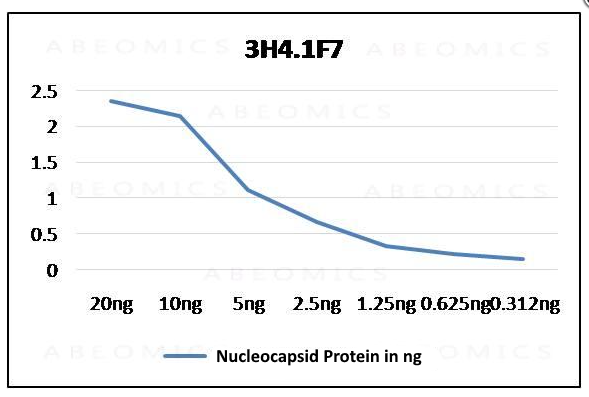Recombinant Human Cystatin D/CSTD/CST5 (C-6His)
Shipping Info:
For estimated delivery dates, please contact us at [email protected]
| Amount : | 50 µg |
| Content : | Lyophilized from a 0.2 µm filtered solution of 20mM MES, 150mM NaCl, pH 5.5. |
| Storage condition : | Lyophilized protein should be stored at -20°C, though stable at room temperature for 3 weeks. Reconstituted protein solution can be stored at 4-7°C for 2-7 days. Aliquots of reconstituted samples are stable at -20°C for 3 months. |
| AA sequence : | GSASAQSRTLAGGIHATDLNDKSVQCALDFAISEYNKVINKDEYYSRPLQVMAAYQQIVGGVNYYFNVKFGRTTCTKSQPNLDNCPFNDQPKLKEEEFCSFQINEVPWEDKISILNYKCRKVVDHHHHHH |
Source: Human Cells.
MW :14.9kD.
Recombinant Human Cystatin D is produced by our Mammalian expression system and the target gene encoding Gly21-Val142 is expressed with a 6His tag at the C-terminus. Cystatin-D is a protein that in humans is encoded by the CST5 gene. The cystatin superfamily encompasses proteins that contain multiple cystatin-like sequences. Some of the members are active cysteine protease inhibitors, while others have lost or perhaps never acquired this inhibitory activity. There are three inhibitory families in the superfamily, including the type 1 cystatins (stefins), type 2 cystatins and the kininogens. The type 2 cystatin proteins are a class of cysteine proteinase inhibitors found in a variety of human fluids and secretions. The cystatin locus on chromosome 20 contains the majority of the type 2 cystatin genes and pseudogenes. This gene is located in the cystatin locus and encodes a protein found in saliva and tears. The encoded protein may play a protective role against proteinases present in the oral cavity.
MW :14.9kD.
Recombinant Human Cystatin D is produced by our Mammalian expression system and the target gene encoding Gly21-Val142 is expressed with a 6His tag at the C-terminus. Cystatin-D is a protein that in humans is encoded by the CST5 gene. The cystatin superfamily encompasses proteins that contain multiple cystatin-like sequences. Some of the members are active cysteine protease inhibitors, while others have lost or perhaps never acquired this inhibitory activity. There are three inhibitory families in the superfamily, including the type 1 cystatins (stefins), type 2 cystatins and the kininogens. The type 2 cystatin proteins are a class of cysteine proteinase inhibitors found in a variety of human fluids and secretions. The cystatin locus on chromosome 20 contains the majority of the type 2 cystatin genes and pseudogenes. This gene is located in the cystatin locus and encodes a protein found in saliva and tears. The encoded protein may play a protective role against proteinases present in the oral cavity.
Always centrifuge tubes before opening. Do not mix by vortex or pipetting. It is not recommended to reconstitute to a concentration less than 100 µg/ml. Dissolve the lyophilized protein in ddH2O. Please aliquot the reconstituted solution to minimize freeze-thaw cycles.
Endotoxin : Less than 0.1 ng/µg (1 IEU/µg) as determined by LAL test.
For Research Use Only. Not for use in diagnostic/therapeutics procedures.
| Subcellular location: | Secreted |
| Tissue Specificity: | Expressed in submandibular and sublingual saliva but not in parotid saliva (at protein level). Expressed in parotid gland but not in seminal vesicle, prostate, epididymis, testis, ovary, placenta, thyroid, gastric corpus, small intestine, liver, or gall bladder tissue. |
| BioGrid: | 107855. 24 interactions. |
|
There are currently no product reviews
|
















.png)









